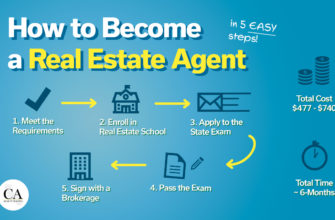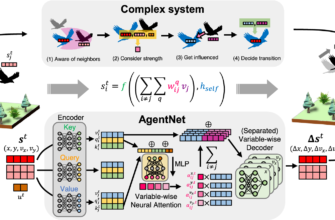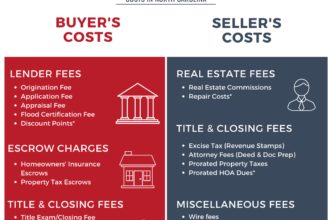If you are a landlord or property owner, having a lease agreement in place is crucial to protect your interests and ensure a smooth rental process. A lease agreement is a legally binding contract that outlines the terms and conditions of renting your property to a tenant. It establishes the rights and responsibilities of both parties and helps avoid any misunderstandings or disputes down the line.
Benefits of Having a Lease Agreement:
- Clear Communication: A well-drafted lease agreement provides clear communication between you and your tenant by clearly stating the rules, regulations, and expectations.
- Legal Protection: A lease agreement protects your rights as a landlord and ensures that your property is being used in accordance with the terms outlined in the contract.
- Financial Security: By including important details such as rent amount, payment due dates, and consequences for late payments, a lease agreement helps you secure a steady income from your property.
- Repair and Maintenance: A lease agreement can specify the responsibilities of the tenant regarding repairs and maintenance, ensuring that the property is well taken care of throughout the tenancy.
Creating a Lease Agreement:
Creating a lease agreement doesn’t have to be a complex or time-consuming process. With the help of online resources and templates, you can easily draft a customized lease agreement for your property. These resources provide pre-drafted lease agreements that you can modify to suit your specific requirements. Additionally, they often include clauses that address common issues, such as pets, late fees, and termination of the lease.
Important Elements of a Lease Agreement:
| 1. Names and Addresses: | Include the full legal names and addresses of both the landlord(s) and tenant(s). |
| 2. Rent Details: | Clearly state the rent amount, payment due dates, and any penalties for late payments. |
| 3. Lease Term: | Specify the start and end date of the lease, including any renewal options. |
| 4. Security Deposit: | Outline the amount of the security deposit and the conditions for its return. |
| 5. Maintenance and Repairs: | Define the responsibilities of both the landlord and tenant regarding maintenance and repairs. |
Pro Tip: It is always a good idea to consult with a legal professional or a real estate attorney to ensure that your lease agreement complies with local laws and regulations.
Understanding the lease agreement
An effective lease agreement should include the following key elements:
- Names and contact information: The lease agreement should clearly state the full names and contact information of both the landlord and the tenant.
- Property description: The lease agreement should provide a detailed description of the rental property, including its address, unit number, and any specific features or amenities.
- Lease duration and renewal: The lease agreement should specify the duration of the lease, whether it is a fixed-term lease or a month-to-month arrangement. It should also outline the renewal process, including any notice periods.
- Rent amount and payment terms: The lease agreement should clearly state the monthly rent amount, as well as any additional fees or charges. It should also outline the payment terms, including the due date, preferred payment method, and consequences for late payments.
- Security deposit: The lease agreement should detail the amount of the security deposit, as well as the conditions for its return at the end of the lease.
- Responsibilities of both parties: The lease agreement should outline the responsibilities of both the landlord and the tenant, including maintenance and repairs, utilities, and any specific rules or restrictions.
By carefully reviewing and understanding the lease agreement, both landlords and tenants can ensure a fair and mutually beneficial rental experience. It is recommended to seek legal advice or assistance when drafting or signing a lease agreement to ensure compliance with local laws and regulations.
Identifying Your Needs and Preferences
When identifying your needs and preferences, consider the following factors:
- Location: Determine the desired location for your property. Consider factors such as proximity to work or school, accessibility to transportation, and the neighborhood’s safety and amenities.
- Property Type: Decide on the type of property you prefer, such as an apartment, house, or condominium. Consider the size, layout, and number of bedrooms and bathrooms you need.
- Budget: Determine your budget for rent and associated expenses. This will help you narrow down your options and ensure you can comfortably afford the property.
- Amenities and Features: Make a list of amenities and features that are important to you, such as parking, laundry facilities, a fitness center, or pet-friendly policies. This will help you prioritize your preferences and find a property that meets your requirements.
- Lease Term: Decide on the desired lease term, whether it’s a short-term or long-term rental. Consider any future plans or potential changes that may affect your rental needs.
Identifying your needs and preferences is crucial in finding the right property for you. Take the time to carefully consider these factors and create a list of must-haves and nice-to-haves. This will guide your search and help you find a lease agreement that meets your specific requirements.
Finding potential landlords or rental agencies

- Online platforms: Utilize popular online platforms such as Zillow, Craigslist, or Rent.com to search for available rental properties and connect with potential landlords or rental agencies. These platforms often provide a detailed description of the property, including rental terms and contact information.
- Local newspapers: Check the classified section of local newspapers where landlords often advertise available rental properties. This method is particularly useful for finding properties in smaller towns or communities where online platforms may be less popular.
- Referrals: Ask friends, family, or colleagues if they know of any potential landlords or rental agencies. Referrals can be a valuable source of information and may lead to finding properties that are not publicly listed.
- Real estate agents: Consider working with a real estate agent who specializes in rental properties. They have access to a wide network of landlords and rental agencies and can help you find suitable rental options that meet your criteria.
Once you have found potential landlords or rental agencies, it is crucial to conduct thorough research and due diligence. Verify the legitimacy of the property owner or agency, read reviews or testimonials if available, and ask for any necessary documentation to ensure a smooth and reliable rental process.
Negotiating the terms of the lease agreement

Here are some key steps to consider when negotiating the terms of a lease agreement:
- Identify your goals: Before entering into any negotiation, it is important to clearly identify your goals and desired outcomes. This includes determining the length of the lease, rent amount, payment schedule, and any other specific terms and conditions.
- Research market conditions: To ensure that your lease agreement is fair and competitive, it is essential to research the local rental market. This includes understanding the average rental rates in the area, as well as any specific trends or factors that may impact the value of your property.
- Consider the needs of both parties: Negotiations should be approached with a willingness to find common ground and meet the needs of both parties. This may involve compromises on certain terms or the inclusion of additional benefits or provisions that add value for both the landlord and tenant.
| Landlord’s priorities | Tenant’s priorities |
|---|---|
| Receiving on-time rent payments | Ensuring the property meets their needs and is well-maintained |
| Protecting the property from damage | Having a reliable and responsive landlord |
| Enforcing lease terms and conditions | Having flexibility in lease term lengths |
Remember, negotiating a lease agreement is about finding a balance between your goals and the needs of the other party. By approaching the negotiation process with open communication and a willingness to collaborate, you can increase the chances of reaching a favorable agreement that satisfies both parties.
Reviewing the lease agreement
Here are some key aspects to consider when reviewing a lease agreement:
- Rent and payment terms: The lease agreement should clearly state the amount of rent, the due date, and the accepted payment methods. It is important to understand any late payment fees or penalties.
- Lease duration: The lease agreement should specify the start and end dates of the lease term. It is important to know if there are any renewal options and the notice period required for termination.
- Security deposit: The lease agreement should outline the amount of the security deposit and the conditions for its refund at the end of the tenancy. It is important to understand any deductions that may be made from the deposit.
- Property maintenance: The lease agreement should detail the responsibilities of both the landlord and tenant regarding property maintenance and repairs. It is important to know who is responsible for what and how maintenance requests should be made.
Additionally, it is advisable to pay attention to any other clauses or provisions in the lease agreement, such as restrictions on pets or subleasing. It may be helpful to consult with a legal professional or a real estate agent if there are any concerns or questions regarding the lease agreement before signing.
Signing the Lease Agreement
Here are some key points to consider when signing a lease agreement:
- Rental Terms: The lease agreement should clearly state the duration of the lease, whether it is a fixed-term lease or a month-to-month agreement. It should also indicate the date the tenancy starts and ends.
- Rent Payment: The agreement should specify the amount of rent to be paid, the due date, and the accepted payment methods. It should also mention any late payment fees or penalties.
- Security Deposit: The lease agreement should outline the amount of the security deposit and the conditions for its return, such as deducting any damages or unpaid rent.
- Utilities and Maintenance: It’s important to clarify which party is responsible for utilities and maintenance expenses. The agreement should state whether the tenant is responsible for paying for utilities and what repairs the landlord is responsible for.
Tip: Before signing the lease agreement, it’s advisable to inspect the property thoroughly and document any existing damages. This can help avoid disputes and ensure that the tenant is not held responsible for pre-existing issues.
A lease agreement is a legally binding document, and both the landlord and the tenant should fully understand its contents before signing. It’s recommended to seek legal advice if there are any doubts or concerns about the terms and conditions.
Paying the necessary fees and deposits

- Application fee: This fee is typically required when you submit an application to rent a property. It covers the cost of processing your application, including background checks and credit checks.
- Security deposit: The security deposit is a refundable amount of money that the landlord holds as a guarantee against any damages or unpaid rent. It is usually equal to one month’s rent but may vary depending on the property and rental agreement.
- First and last month’s rent: Many landlords require tenants to pay the first and last month’s rent upfront before moving into the property. This provides a buffer for the landlord in case the tenant fails to pay rent in the final month of the lease term.
- Pet deposit: If you have pets, the landlord may require a pet deposit to cover any potential damages caused by your pets. This deposit is typically refundable, but it may vary depending on the size and type of pet.
Note: It is important to carefully review the lease agreement and any additional documents provided by the landlord or property management company to understand the specific fees and deposits required for the property you are interested in renting.
When budgeting for your rental property, it is essential to consider these fees and deposits in addition to the monthly rent. Make sure to ask the landlord or property management company about any fees or deposits that are not clearly outlined in the lease agreement. Being aware of and prepared for these financial obligations will help ensure a smooth rental process and avoid any misunderstandings or surprises.
Maintaining the Lease Agreement Throughout the Tenancy
Periodic Inspections: Landlords should conduct periodic inspections of the property to ensure it is being properly maintained by the tenant. This can be done quarterly, semi-annually, or annually, depending on the terms of the lease agreement. During these inspections, landlords can check for any damages or violations of the terms of the lease agreement.
- Inspect the property for damages or maintenance issues
- Check that the tenant is abiding by any pet or smoking restrictions
- Ensure the property is being used for residential purposes only
Any issues or concerns discovered during the inspection should be documented and addressed with the tenant in accordance with the lease agreement.
Note: It is important for landlords to provide proper notice and obtain the tenant’s consent before entering the property for inspections, as outlined in the lease agreement and local laws.
Communication: Maintaining open lines of communication is essential for both landlords and tenants throughout the tenancy. Landlords should promptly respond to any concerns or requests raised by the tenant, and tenants should inform the landlord of any issues that arise that may require their attention.
- Landlords should respond to maintenance requests in a timely manner
- Tenants should inform the landlord of any damages or maintenance issues that occur
- Both parties should notify each other of any changes in contact information
By staying in regular communication, both parties can address any problems or concerns as they arise, preventing potential disputes and maintaining a positive landlord-tenant relationship.
Maintaining the lease agreement throughout the tenancy
| Key Points | Explanation |
| Regular inspections | Landlords should conduct regular inspections to ensure the property is being properly maintained and to identify any potential issues. |
| Repair and maintenance responsibilities | The lease agreement should clearly define the responsibilities of both the landlord and the tenant when it comes to repairs and maintenance. |
| Notifying the landlord | The tenant should promptly notify the landlord of any repairs or maintenance issues that arise during the tenancy. |
| Paying rent on time | The tenant must pay the agreed-upon rent on time and in full throughout the duration of the lease agreement. |
| Respecting the property | The tenant should treat the property with respect and avoid causing any damage to it. |
| Keeping the property clean | The tenant is responsible for keeping the property clean and sanitary, including regular cleaning tasks. |
| Obtaining approval for modifications | If the tenant wishes to make any modifications or alterations to the property, they must obtain the landlord’s approval in advance. |
| Abiding by rules and regulations | The tenant must adhere to any rules and regulations set forth in the lease agreement or by the landlord or property management. |
| Renewing or terminating the lease | Both the landlord and the tenant should be aware of the lease renewal or termination process and adhere to the agreed-upon notice periods. |
Maintaining the lease agreement throughout the tenancy is crucial for both landlords and tenants. Regular inspections ensure the property is being properly maintained and allows any potential issues to be identified early on. The lease should clearly define the responsibilities of both parties when it comes to repairs and maintenance. Tenants should promptly report any repairs or maintenance issues to the landlord. Paying rent on time is essential, and tenants should also treat the property with respect, keeping it clean and avoiding damage. Any modifications to the property should be approved by the landlord. Tenants must abide by any rules and regulations set forth in the lease agreement or by the landlord. Both parties should be aware of the lease renewal or termination process and adhere to the agreed-upon notice periods.
FAQs
What should I do if I have a problem with my landlord during my tenancy?
If you have a problem with your landlord during your tenancy, it is important to address the issue as soon as possible. You should discuss the problem with your landlord and try to come to a resolution. If the issue cannot be resolved, you may need to seek legal advice or contact a housing authority.
What are my responsibilities as a tenant?
As a tenant, you have certain responsibilities. These may include paying rent on time, maintaining the property, reporting any necessary repairs, and following the terms of the lease agreement. It is important to adhere to these responsibilities to maintain a positive relationship with your landlord.
Can the landlord increase the rent during the tenancy?
In most cases, the landlord can increase the rent during the tenancy. However, there may be restrictions on how much and how often the rent can be increased, which can vary depending on local laws and regulations. It is important to check your lease agreement and consult any relevant laws or regulations in your area.
What happens if I break the terms of the lease agreement?
If you break the terms of the lease agreement, there may be consequences. These consequences can vary depending on the specific terms of the agreement and local laws. It is possible that you may have to pay a penalty, face eviction, or face legal action from the landlord. It is important to carefully read and understand the terms of the lease agreement to avoid any potential issues.
Do I need to provide notice before moving out?
In most cases, you will need to provide notice before moving out of a rental property. The amount of notice required can vary depending on local laws and the terms of your lease agreement. It is important to review your lease agreement and consult any relevant laws to determine how much notice you need to provide.
How often should I review and update my lease agreement?
It is recommended to review and update your lease agreement annually or whenever any major changes occur in the tenancy. This ensures that the agreement remains relevant and protects the rights and responsibilities of both the landlord and tenant.









